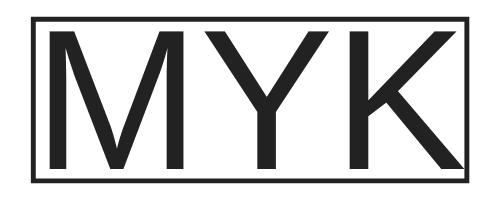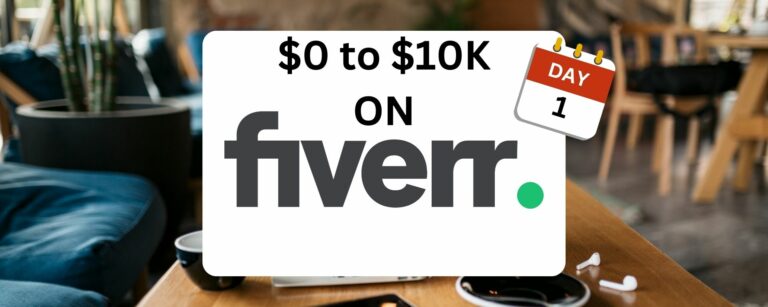Blog Writing Format Guide – 2023
In the ever-evolving world of content creation, staying ahead with the latest Blog Writing Format 2023 is crucial for success. On-Page SEO is fundamental to writing engaging, informative content for your readers and search engine friendly. The right blog post format can make all the difference in giving your readers the best experience and keeping them engaged. Whether you’re a freelancer or looking to build content for your affiliate marketing site you need to have the right formatting to succeed.
This guide will delve into the fundamentals of on-page SEO and provide strategies to optimize your content for optimal visibility. You’ll learn valuable tips on crafting an engaging blog post that resonates with your target audience.
Furthermore, we’ll explore structuring your blog post for maximum impact, including incorporating images and videos effectively within your content to enhance reader experience and drive engagement.
What is On-Page SEO?
On-page SEO refers to how content is written and structured on a web page. It includes optimizing the HTML elements such as titles, meta descriptions, and headings. It also involves ensuring that all content is relevant to what readers search for and creating a user-friendly experience. It’s a crucial aspect of blog writing because it helps search engines understand your content better and determine its relevance to users’ queries. You can increase your website’s visibility and performance by implementing effective on-page SEO strategies.
The Importance of On-Page SEO
The primary goal of on-page optimization is to ensure that search engines and readers find value in your content. When done correctly, it leads to the following:
- Better rankings: Optimized content is more likely to rank well for targeted keywords since it provides valuable information that meets user intent.
- Increased organic traffic: Higher rankings translate into more visibility in search results, leading to an influx of organic visitors genuinely interested in what you offer.
- User satisfaction: Quality content with proper formatting keeps readers engaged and encourages them to explore further or take action (e.g., subscribing or making a purchase).
Key Components of On-Page Optimization
To achieve optimal on-page SEO results for your blog posts, consider focusing on these essential components:
- Title tags: These HTML elements define the title displayed in search results and should include relevant keywords while being concise yet descriptive.
- Meta descriptions: Summaries provide an overview of your content and should be compelling enough to entice users to click through from search results.
- Keyword research & usage: Identifying the right keywords for your target audience is crucial, and incorporating them naturally throughout your content without overstuffing.
- URL structure: A clean, descriptive URL with relevant keywords makes it easier for users and search engines to understand what a page is about.
- Internal linking: Linking to other related pages on your website helps improve the user experience while distributing link equity across different pages, boosting their SEO value.
- Content quality: High-quality, informative content that addresses readers’ needs will always perform better in engagement and rankings.
With the right strategies, you can easily optimize your content for On-Page SEO to maximize visibility and reach more potential customers.
How to Optimize Your Content for On-Page SEO

To ensure your content is visible and easily accessible to readers, optimizing for on-page SEO is essential. By following these techniques, you can improve the visibility of your posts.
Keyword Research
The first step in optimizing your content is conducting thorough keyword research. Identify the relevant keywords searched within your niche and incorporate them strategically into your blog post. Use tools like Ahrefs Keywords Explorer to find high-volume keywords with low competition. There should be one primary keyword per article.
Meta Tags & Title Optimization
Your blog post’s title should be engaging and contain the primary keyword you’re targeting. The title and focus of your article should match user search intent. Check your target keyword’s top 5 – 10 SERP results to determine the information people are seeking. Your meta description should include the primary keyword and entice people to click on the article.
Readability & Blog Format
The document should be structured using nested headings, similar to a legal document. A well-formatted blog post with a clearly defined hierarchy will flow from the title, headings, subheadings, and paragraphs, making your content more scannable for search and readers. The example below shows a sample blog format:
- H1 Blog Post Title (include keyword)
- Introduction (include bolded keyword)
- 1.0 H2 Subtitle
- 1.1 H3 Subsection
- 1.1.1 H4 Sub-Subsection
- 1.1 H3 Subsection
- 2.0 H2 Subtitle
- 2.1 H3 Subsection
- H2 FAQ Section
- H3 Questions
- H2 Conclusion
Maximizing your content for on-page SEO is indispensable to guarantee that you are profiting from every bit of material. With this in mind, it’s time to look at how to write an engaging blog post that will capture and keep readers’ attention.
Internal and External Links
- Internal linking: Incorporating internal links within your blog helps readers explore other helpful content on your site while telling Google that your post is relevant to the other material on the site.
- External linking: Include external links to high-quality, authoritative sources that support the claims made in your content or provide additional insights. Use descriptive anchor text for these links and avoid using generic phrases like “click here” or “source.”
Writing an Engaging Blog Post

Crafting interesting blog content is essential for snagging your readers’ attention. Below are a few tips on writing a captivating blog post that will resonate with your readers while incorporating the necessary SEO keywords.
Know Your Audience
To effectively engage with your target audience, it is essential to understand their wants, needs, and challenges. Consider creating reader personas to help guide your writing process and ensure you address their needs, desires, and pain points.
Craft Compelling Headlines
Your headline is often the first thing potential readers see when encountering your blog post online or in search results. A compelling headline can make all the difference between someone clicking through to read more or scrolling past without a second thought.
Tell a Story & Be Authentic
People love stories because they evoke emotions and connect the reader and author, two essential ingredients for engagement. Share personal experiences related to living free while earning remotely in beautiful destinations; be authentic about both successes and challenges faced along the way.
Break Up Your Text
Large blocks of text can be intimidating and uninviting for readers. Divide content into manageable chunks with subheadings, bullet points, or numbered lists to make it easier for readers to digest and enhance SEO structure.
Provide Actionable Tips & Resources
Your audience wants solutions to their problems, so provide them. Offer actionable tips and resources for your readers to solve their problems or issue. Give them a reason to read your post; provide value.
Structuring Your Blog Post for Maximum Impact

To maximize the impact of your blog post and its SEO performance, we’ll explore strategies for structuring content that will keep readers engaged.
Create an Engaging Introduction
Your introduction should immediately grab the reader’s attention while clearly explaining what they can expect from your article. You’ll want to include your primary keyword naturally within the first 100 words, as search engines often prioritize content found at the beginning of a page.
Use Headings & Subheadings Effectively
Headings (H1-H6) are essential in organizing your content into sections, making it easier for readers and Google to navigate your article. Ensure each heading accurately reflects its corresponding section’s topic while incorporating relevant keywords when possible.
- H1: Use one H1 tag per page, as this represents the main topic or title of the entire article.
- H2-H6: Utilize these tags throughout your content to break down subtopics logically, creating a coherent flow between sections.
Incorporate Bullet Points & Numbered Lists
Bullet points and numbered lists help break up large blocks of text, making them more digestible for readers while highlighting key takeaways or steps. They also provide an opportunity to include relevant keywords naturally, further optimizing your content for on-page SEO.
Optimize Paragraph Length
Avoid long paragraphs that can be overwhelming and difficult to read. Instead, aim for shorter paragraphs of 2-4 sentences each, focusing on one idea per paragraph to improve readability and make it easier to crawl your content.
Add Internal & External Links
Internal links help guide readers through related content on your website while keeping them engaged longer. Additionally, they assist Google in understanding the structure of your site and its overall relevance.
External links are equally important as they add credibility by referencing authoritative sources supporting your article’s information.
Utilizing Images & Videos in Your Blog Post

Images and videos play a crucial role in enhancing the overall appeal of your blog posts, making them more engaging for readers while also helping to improve on-page SEO.
The Importance of Visual Content
In today’s fast-paced digital world, visual content is essential for capturing the attention of your target audience. Incorporating relevant images and videos into your blog posts can:
- Break up large blocks of text, making it easier for readers to digest information.
- Create an emotional connection with readers by evoking feelings or memories related to the topic.
- Illustrate complex concepts or ideas that may be difficult to explain through text alone.
- Increase social media shares as visually appealing content gets shared more often than plain-text articles.
Optimizing Images & Videos for On-Page SEO
To ensure that you’re getting maximum benefits from incorporating visual elements into your blog posts, follow these best practices when optimizing images and videos:
- Use descriptive file names: Rename image files before uploading them so they accurately describe their contents.
- Optimize alt tags: Add an informative alt tag to each image, concisely describing its content.
- Compress images: Large image files can slow page load times, negatively impacting the user experience and SEO rankings.
- Embed videos from reputable platforms: Rather than hosting videos directly on your website (which can consume valuable server resources), embed them.
Using Images & Videos Responsibly
Always get permission to use images and videos in your posts through stock photo websites or by creating original content.
Incorporating well-optimized visuals into your blog posts will make them more engaging for readers and improve their overall SEO performance – helping you achieve greater visibility and reach within the digital landscape of 2023.
Blog Format Types

Blog post formats can come in many different types, each with unique strengths and advantages. Here are five styles to consider:
- Listicles: Listicles are a popular and effective format for blog content. They typically consist of a numbered list of items or tips related to a particular topic. Listicles are easy to skim and offer readers a quick and digestible format for information. They are also highly shareable, as readers can easily share the post on social media.
- How-to guides: How-to guides offer readers a step-by-step process for accomplishing a specific task or goal. Whether cooking a meal, building a website, or improving a valuable skill, how-to guides provide actionable advice for readers to follow. They are an excellent format for establishing authority in your niche and can help to boost your standing as an expert in your field.
- Case studies: Case studies are an excellent way to demonstrate the value of your products, services, or ideas. They provide real-world examples of how your solutions have helped solve a problem or achieve a goal. Case studies help to build trust with potential customers, as they can see the results of your work in action.
- Opinion pieces: Opinion pieces allow you to share your thoughts and views on a particular topic. They can be controversial and generate discussion and engagement from readers. Opinion pieces are an excellent way to establish your brand and voice within your industry or niche.
- Interviews: Interviews offer readers a chance to hear from experts in your field. By interviewing thought leaders or influencers within your niche, you can offer your readers valuable insights and perspectives. Interviews also help establish connections and relationships within your industry, leading to future collaborations and opportunities.
By experimenting with your blog format, you can find the ones that work best for your content and audience. Whether you choose listicles, how-to guides, case studies, opinion pieces, or interviews, always focus on providing valuable and engaging content that resonates with your readers.
Blog Writing Tools

Writing your very first blog post can be daunting, considering the many components required to write a good blog post. Below is a list of tools that I use to help make the process easier.
Blog Platform
- WordPress: WordPress is the industry leader. It’s easy to use with lots of free themes and plugins. I highly recommend using WordPress to start your blog.
Keyword Research
- Ahrefs: I use Ahrefs to identify keywords for article topics and review blog post ideas. While not free, it is worth the cost.
- SurferSEO: This tool helps you optimize your content for secondary keywords. It uses AI to analyze the SERP results for your specific keyword and identifies secondary keywords that should be in your article. I use this tool with every article I write.
On-Page SEO
- Rankmath: Rankmath helps to make sure you dot your i’s and cross your t’s when it comes to On-Page SEO. Rank math ensures every blog article has the correct meta tags and a clean URL structure. I use the free version of the tool.
Internal Linking
- Link Whisperer: If you’re looking for a tool to help with your internal linking structure, this is the one. I use the free version to identify orphan content and key links I may want to include in a post.
Images
- Canva: Canva is great for quickly creating impactful images. I use the paid version that gives me access to a massive library of licensed content. Well worth the cost.
- EWWW Image Optimizer: Many image optimization WordPress plugins are available. This is the one I have chosen to use.
These are the primary tools I use to help me write high-quality blog posts for my site and others. Consider additional apps like Wordable that simplifies how to post to WordPress directly from Google Docs and Grammarly to check for plagiarism and improve your content.
Blog Post Examples
- How To Start Affiliate Marketing With No Money: Your Complete Guide 2023
- Hiking in Japan: A Guide to the Best Trails
- 41 Best Apps For Freelancers – Online Tools 2023
FAQs
What is a good first blog post?
When considering your first blog post ideas, focus on topics you know inside and out. A good blog post format is a comprehensive listicle article that covers your whole niche – something with many points (50+) that readers will link to and share.
Is Blogging Still Effective in 2023?
Yes, blogging remains an effective strategy for building an online presence and generating leads in 2023. The key to success is creating high-quality content that resonates with your target audience and optimizing it for SEO. Recent statistics show that businesses with blogs generate more leads than those without.
How Do I Write a Blog Post in 2023?
To write a successful blog post in 2023, provide valuable information tailored to your audience’s needs. Research relevant keywords, create engaging headlines, structure your content logically using headers and subheaders, optimize on-page SEO elements like meta tags and image alt text, and incorporate multimedia such as images or videos when appropriate.
Is It Worth It to Start a Blog in 2023?
Starting a blog can be worthwhile if you’re passionate about sharing knowledge or experiences within a specific niche. A well-maintained blog can help build credibility as an expert within your field while also serving as an excellent platform for networking, generating leads, and potentially monetizing through various methods like affiliate marketing or sponsored content.
Conclusion
Optimizing your blog post for on-page SEO is crucial in getting more traffic and engagement. Following the tips above, you will structure your content effectively and make it visually appealing with images and videos. Writing an engaging blog post requires creativity, research, and a deep understanding of your target audience.
Happy Blogging!
Let me know how your first blog post went in the comments.






